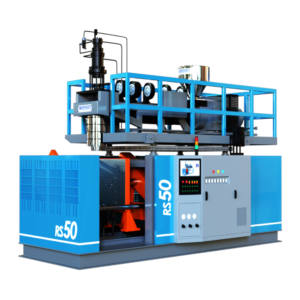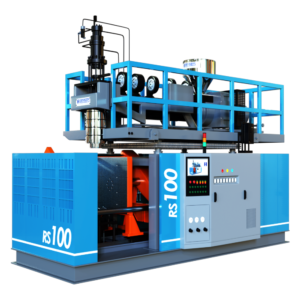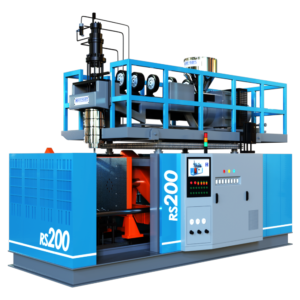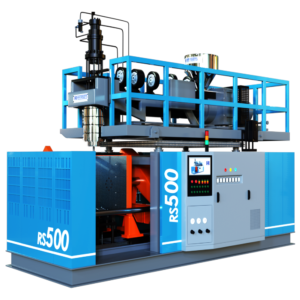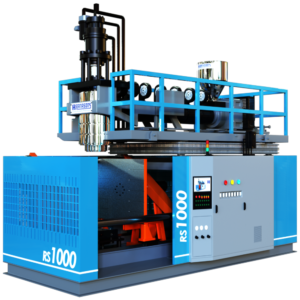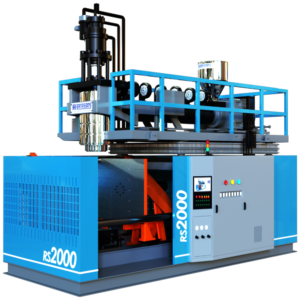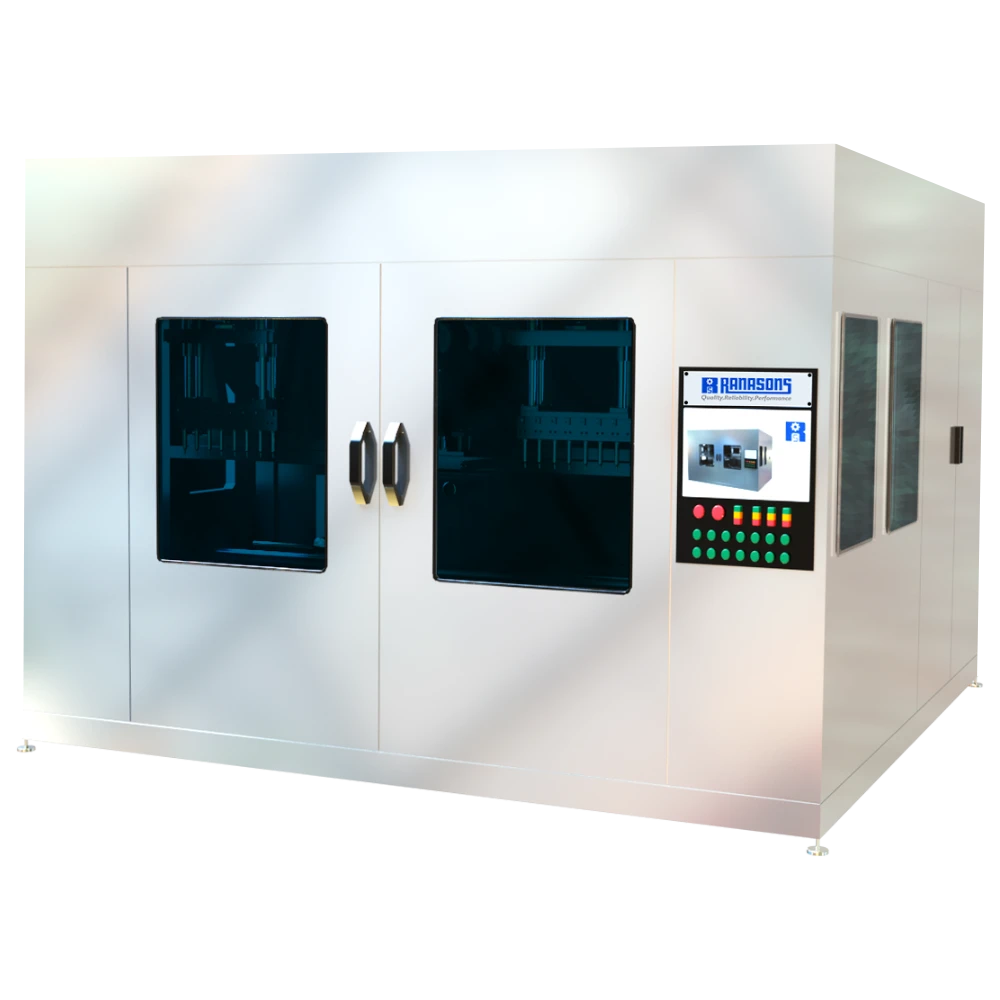Loft Tank Blow Moulding
Introduction
In the realm of water storage solutions, loft tanks stand out as indispensable assets for households and businesses alike. These tanks, often installed in overhead spaces like lofts or rooftops, serve as reservoirs for storing water efficiently. However, the process behind crafting these tanks often goes goes unnoticed. Loft tank blow moulding emerges as a pivotal technique in manufacturing these essential utilities, offering a range of advantages that merit exploration. In this topic, we delve into the world of loft tank blow moulding, uncovering benefits addressing common queries and shedding light on its relevance in today’s context.
What is Loft Tank Blow Moulding?
Loft tank blow moulding is a specialized manufacturing process employed to create seamless, durable and cost-effective water storage tanks. This technique involves the use of high-density polyethylene (HDPE) or other suitable materials, which are heated and inflated within a mould until they take the desired shape and size. The result is a robust tank structure with smooth surfaces capable of withstanding varying temperatures and water pressures. Loft tank blow moulding is an efficient and advanced manufacturing process. Loft blow moulding can be integrated with latest automations, IOT and Industry 4.0
Advantages of Loft Tank Blow Moulding?
Customization: Loft tank blow moulding allows for precise customization according to specific requirements. Whether it’s adjusting the tank’s capacity, dimensions or features such as outlets and fittings, manufacturers can tailor the tanks to meet diverse needs.
Seamless Design: Unlike traditional tank manufacturing methods that involve seams and joints, loft tank blow moulding produces tanks with seamless designs. This eliminates weak points where leaks could occur, enhancing the tank’s reliability and longevity.
Durability: HDPE, the primary material used in loft tank blow moulding, boasts exceptional durability and resistance to corrosion, chemicals and UV radiation. As a result, products manufactured through loft tank blow moulding process exhibit long-term structural integrity making them suitable for both indoor and outdoor installations.
Easy Installation: Loft tank blow moulding manufactured products are lightweight yet sturdy facilitating hassle-free installation processes. Their manageable weight also simplifies transportation and handling, reducing logistical complexities.
Low Maintenance: Thanks to their robust construction and resistance to degradation, loft tank blow moulding manufactured products require minimal maintenance over their lifespan. This translates to fewer repair expenses and downtime making them a practical choice for long-term water storage solutions.
Suitable Machines:
Frequently Asked Questions:
Yes, loft tank blow moulding manufactured products use food-grade materials and are safe for storing potable water. Manufacturers adhere to stringent quality standards to ensure the tanks meet regulatory requirements for water storage.
Loft tank blow moulding manufactured products use materials like HDPE, which exhibit excellent resistance to weathering including exposure to sunlight, frost and rain. However, proper installation and maintenance practices are essential to maximize their longevity in harsh environments.
With regular maintenance and proper usage, loft tank blow moulding manufactured products can last upwards of 10-15 years or more. Factors such as material quality, installation practices and environmental conditions can influence the tank’s lifespan.
Loft tank blow moulding particularly when using recyclable materials align with sustainable manufacturing practices. HDPE is widely recyclable contributing to circular economy by reducing plastic waste and conserving resources.
Ranasons has a vast experience of more than 30+ years in loft tank blow moulding. Over the years, we have worked with all OEM’s and almost all available raw materials in the domain. Our blow moulding line also includes specialized machines specific to loft tank blow moulding and range of made to order machines and technology.
Plastic, often hailed as one of the most versatile and revolutionary materials ever created, has woven itself intricately into the fabric of modern life. Its development and widespread use have transformed industries, improved the quality of life, and driven technological advancements. To truly appreciate why plastic is considered a wonder and magical material, it is essential to delve into its history, properties, applications, and impact on society.
A Brief History of Plastic
The story of plastic begins in the 19th century with the invention of the first synthetic polymer. In 1869, John Wesley Hyatt developed a material called celluloid as a substitute for ivory. This early plastic was used for a variety of products, including combs, billiard balls, and photographic film. However, it was in the early 20th century that plastic truly began to revolutionize the world.
In 1907, Leo Baekeland created Bakelite, the first fully synthetic plastic. Unlike celluloid, Bakelite did not rely on natural materials, making it a true synthetic marvel. Its heat-resistant and electrically insulating properties made it ideal for electrical insulators, radio and telephone casings, and other applications. This marked the beginning of the “Plastic Age.”
The discovery and development of various plastics such as polyethylene, polypropylene, polyvinyl chloride (PVC), and polystyrene in the mid-20th century further expanded the possibilities of this remarkable material. Each new type of plastic brought unique properties that found applications across a wide range of industries.
Properties of Plastic
Plastics possess a set of remarkable properties that make them indispensable in modern society. These properties contribute to their versatility, durability, and wide range of applications:
Lightweight: Plastics are significantly lighter than metals and many other materials. This property reduces transportation costs and energy consumption, making plastic products more economical and environmentally friendly in many cases. The lightweight nature of plastics has revolutionized industries such as automotive and aerospace, where reducing weight is crucial for fuel efficiency and performance.
Durability: Plastics are resistant to corrosion, moisture, and chemicals, ensuring a long lifespan. This durability makes them ideal for use in products that need to withstand harsh environments, such as pipes, automotive parts, and outdoor furniture. The ability to resist wear and tear has also made plastics a popular choice for consumer goods and packaging.
Flexibility: Plastics can be molded into almost any shape, allowing for innovative and intricate designs. This flexibility has revolutionized industries like packaging, where plastics can be formed into containers, bottles, and films of various shapes and sizes. The versatility in design has also enabled the creation of complex and precise medical devices and electronic components.
Versatility: Plastics can be engineered to possess specific properties, such as transparency, conductivity, or flame resistance. This adaptability makes them suitable for a wide range of applications, from medical devices to electronic components. The ability to tailor the properties of plastics has led to their widespread use in specialized fields such as aerospace and biotechnology.
Cost-effectiveness: The production of plastics is generally cost-effective, especially when compared to materials like metal or glass. This affordability has democratized access to countless products, improving the quality of life for people around the world. The low cost of production and raw materials has made plastics a staple in mass manufacturing and consumer goods.
Applications of Plastic
The applications of plastic are virtually limitless, spanning across industries and everyday life. Here are some key areas where plastic has made a significant impact:
Healthcare:
Plastic has revolutionized the healthcare industry, playing a crucial role in medical devices, equipment, and packaging. Its use in disposable syringes, IV bags, surgical instruments, and prosthetics has improved hygiene and reduced the risk of infections. Additionally, plastic’s versatility allows for the creation of advanced medical devices, such as pacemakers, artificial joints, and diagnostic equipment.
Plastic packaging in healthcare ensures the sterility and safety of medical products. Single-use plastic items, such as gloves and masks, have become essential in preventing the spread of infections. The development of biocompatible plastics has also paved the way for innovations in drug delivery systems and implants.
Packaging:
The packaging industry heavily relies on plastic due to its lightweight, durability, and versatility. Plastic packaging protects products from damage, extends shelf life, and reduces transportation costs. From food and beverage containers to pharmaceutical packaging, plastic has become an integral part of the supply chain.
Innovations in plastic packaging, such as resealable bags and vacuum packaging, have improved the convenience and preservation of food products. The use of plastic films and wraps has also revolutionized the packaging of perishable goods, reducing food waste and enhancing food safety.
Automotive and Aerospace:
In the automotive and aerospace industries, plastic’s lightweight properties contribute to fuel efficiency and performance. Components such as dashboards, bumpers, and interior trims are often made from plastic, reducing the overall weight of vehicles and aircraft. Additionally, plastic composites are used in the construction of modern aircraft, enhancing their strength and durability.
The use of plastic in automotive manufacturing has led to the development of safer and more efficient vehicles. Lightweight plastic parts reduce the overall weight of vehicles, improving fuel economy and reducing emissions. In the aerospace industry, advanced plastic composites are used in the construction of aircraft fuselages and wings, contributing to improved performance and fuel efficiency.
Electronics:
Plastic is a critical component in the electronics industry, used in everything from circuit boards to casings for devices. Its insulating properties make it ideal for protecting electronic components from heat and moisture. The development of flexible plastics has also paved the way for innovations such as flexible displays and wearable technology.
The use of plastic in electronics has enabled the miniaturization and portability of devices. Plastic casings provide lightweight and durable protection for smartphones, laptops, and other electronic devices. Flexible plastic materials are used in the development of bendable displays and wearable electronics, opening up new possibilities for consumer electronics.
Construction:
In the construction industry, plastic is used for pipes, insulation, roofing materials, and flooring. Its resistance to corrosion and moisture makes it a reliable choice for plumbing and electrical conduits. Plastic composites are also used in the construction of bridges, buildings, and infrastructure projects, providing durability and reducing maintenance costs.
Plastic pipes and fittings are widely used in plumbing systems due to their lightweight and corrosion-resistant properties. Insulation materials made from plastic, such as foam boards and spray foam, improve energy efficiency in buildings. Plastic composites are also used in the construction of bridges and other infrastructure projects, offering strength and durability.
Consumer Goods:
Plastic is ubiquitous in consumer goods, including household items, toys, furniture, and clothing. Its versatility allows for the creation of aesthetically pleasing and functional products that enhance everyday life. From kitchen utensils to sports equipment, plastic has become an integral part of our daily routines.
The use of plastic in consumer goods has led to the development of affordable and durable products. Plastic kitchen utensils and storage containers are lightweight and easy to clean. Toys made from plastic are durable and safe for children. In the fashion industry, plastic fibers are used to create lightweight and wrinkle-resistant clothing.
Environmental Impact and Sustainability
While plastic has undoubtedly brought numerous benefits, it is essential to address the environmental challenges associated with its use. Plastic waste has become a significant concern, with millions of tons ending up in landfills and oceans each year. The durability that makes plastic so valuable also means that it can persist in the environment for centuries, posing risks to wildlife and ecosystems.
However, it is crucial to recognize that plastic itself is not inherently problematic; rather, it is the way we manage and dispose of it that poses challenges. Efforts to address plastic waste and promote sustainability are gaining momentum:
Recycling
Recycling plastic helps reduce the amount of waste that ends up in landfills and oceans. Many countries have implemented recycling programs to collect and process plastic waste into new products. Advances in recycling technologies are also making it possible to recycle a wider range of plastic types.
The recycling process involves collecting, sorting, and processing plastic waste into new products. Mechanical recycling involves melting and reprocessing plastic waste, while chemical recycling breaks down plastics into their chemical components for reuse. Increasing public awareness and participation in recycling programs is crucial for reducing plastic waste.
Biodegradable Plastics
Researchers are developing biodegradable plastics that break down more quickly in the environment. These materials offer the potential to reduce the long-term impact of plastic waste. Biodegradable plastics are designed to decompose under specific conditions, such as exposure to sunlight or microbial activity.
Biodegradable plastics can be used in applications where traditional plastics are not suitable, such as agricultural mulch films and single-use packaging. However, it is important to ensure that biodegradable plastics do not contribute to microplastic pollution or release harmful substances during degradation.
Circular Economy
The concept of a circular economy aims to keep materials in use for as long as possible through recycling, reuse, and remanufacturing. This approach can help minimize waste and make better use of resources. In a circular economy, products are designed to be easily disassembled and recycled, reducing the need for virgin materials.
Implementing a circular economy for plastics requires collaboration between manufacturers, consumers, and policymakers. Designing products for durability and recyclability, promoting the use of recycled materials, and developing effective waste management systems are essential steps towards a circular economy.
Innovation in Materials
Scientists are exploring new materials and alternatives to traditional plastics. For example, bio-based plastics made from renewable sources like corn or algae are being developed to reduce reliance on fossil fuels. These bio-based plastics can be used in a variety of applications, from packaging to automotive components.
Innovations in materials science are also leading to the development of high-performance plastics with enhanced properties. For example, nanocomposites and advanced polymers offer improved strength, durability, and thermal stability, making them suitable for demanding applications in aerospace and electronics.
The Future of Plastic
As we look to the future, plastic will continue to play a vital role in advancing technology, improving quality of life, and addressing global challenges. Here are some areas where plastic is expected to make significant contributions:
Medical Advancements:
Plastic will continue to be at the forefront of medical innovation, enabling the development of new treatments, devices, and diagnostic tools. Advances in biocompatible plastics will enhance the safety and effectiveness of medical implants and prosthetics. Plastic-based materials are also being used in tissue engineering and regenerative medicine, offering new possibilities for repairing and replacing damaged tissues. The development of smart plastics with embedded sensors and drug delivery systems holds promise for personalized medicine. These advanced materials can monitor health conditions and deliver targeted therapies, improving patient outcomes and reducing healthcare costs.
Sustainable Packaging:
The packaging industry is evolving towards more sustainable practices, with a focus on reducing plastic waste and increasing recyclability. Innovations in packaging materials and design will help minimize the environmental impact. For example, lightweight and recyclable packaging materials can reduce the carbon footprint of products and improve resource efficiency.
The development of edible and compostable packaging materials offers a potential solution to plastic waste in the food industry. These materials can be used for single-use packaging and foodservice items, reducing the reliance on traditional plastics and minimizing environmental impact.
Energy Efficiency:
In the pursuit of energy efficiency, plastics will play a crucial role in light-weight vehicles and improving insulation in buildings. These advancements will contribute to reduced energy consumption and greenhouse gas emissions. For example, lightweight plastic components in electric vehicles can improve range and performance, while plastic insulation materials can enhance the energy efficiency of buildings.
The use of plastic composites in wind turbine blades and solar panels can also improve the performance and durability of renewable energy systems. These advanced materials offer a combination of strength, lightweight, and corrosion resistance, making them ideal for harsh environmental conditions.
Advanced Electronics:
The electronics industry will benefit from ongoing innovations in plastic materials, enabling the development of flexible, lightweight, and durable electronic devices. From wearable technology to flexible displays, plastic will drive the next generation of electronic advancements. For example, flexible plastic substrates are used in the development of bendable and roll-able displays, offering new possibilities for consumer electronics.
The development of conductive and semi-conductive plastics is also enabling the creation of advanced electronic components, such as organic light-emitting diodes (OLEDs) and flexible sensors. These materials offer unique properties that are not achievable with traditional silicon-based electronics, opening up new possibilities for flexible and wearable devices.
Environmental Solutions
Plastic can be part of the solution to environmental challenges. For example, plastic membranes are used in water purification and desalination processes, providing access to clean water in regions facing water scarcity. Advanced plastic materials are also used in air and water filtration systems, helping to reduce pollution and improve environmental quality.
The use of plastic composites in infrastructure projects can enhance the durability and longevity of structures, reducing the need for maintenance and repair. For example, plastic-reinforced concrete can improve the strength and resilience of buildings and bridges, making them more resistant to natural disasters and environmental degradation.
Conclusion
Plastic is undeniably a wonder and magical material that has transformed the world in countless ways. Its versatility, durability, and cost-effectiveness have made it indispensable in industries ranging from healthcare to automotive, electronics to construction. While the environmental impact of plastic waste is a significant concern, ongoing efforts to promote sustainability and innovation are paving the way for a more responsible and circular approach to plastic use.
As we continue to harness the potential of plastic, it is essential to balance its benefits with responsible management and disposal practices. By embracing recycling, exploring new materials, and advancing sustainable technologies, we can ensure that plastic remains a valuable and magical material for generations to come.
Plastic’s journey from its inception to its current omnipresence is a testament to human ingenuity and the boundless possibilities of material science. It has truly earned its place as one of the most remarkable materials ever made. The challenge now lies in using this wonder material responsibly and sustainably, ensuring that its benefits continue to outweigh its environmental impact. By doing so, we can fully realize the magic of plastic and its potential to improve our lives and the world around us.




